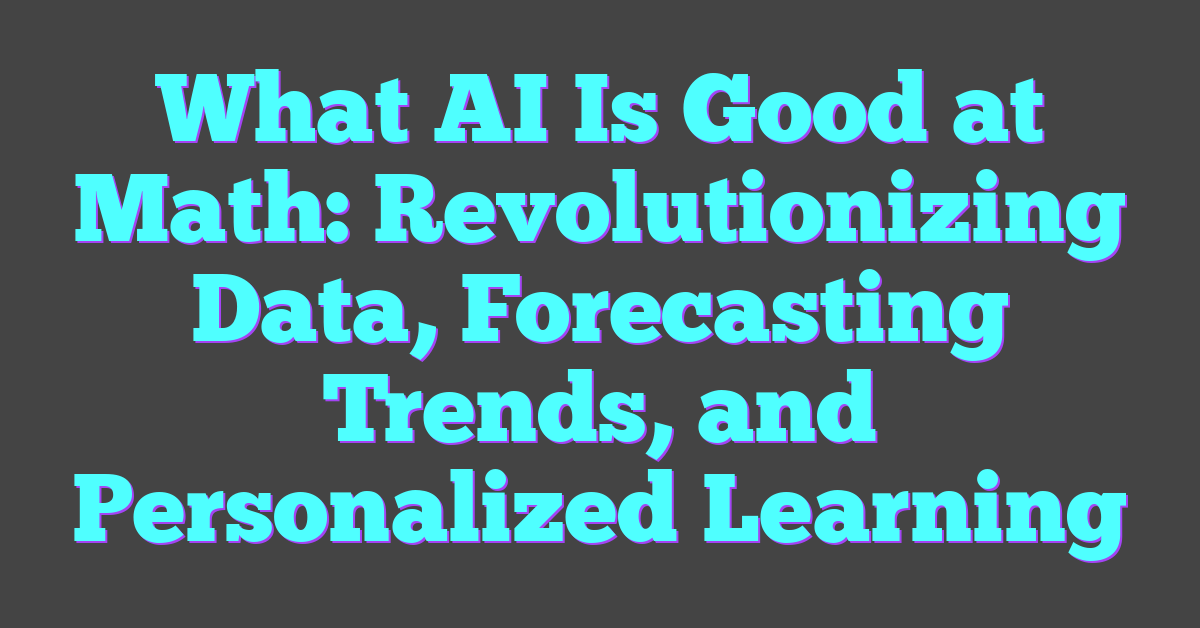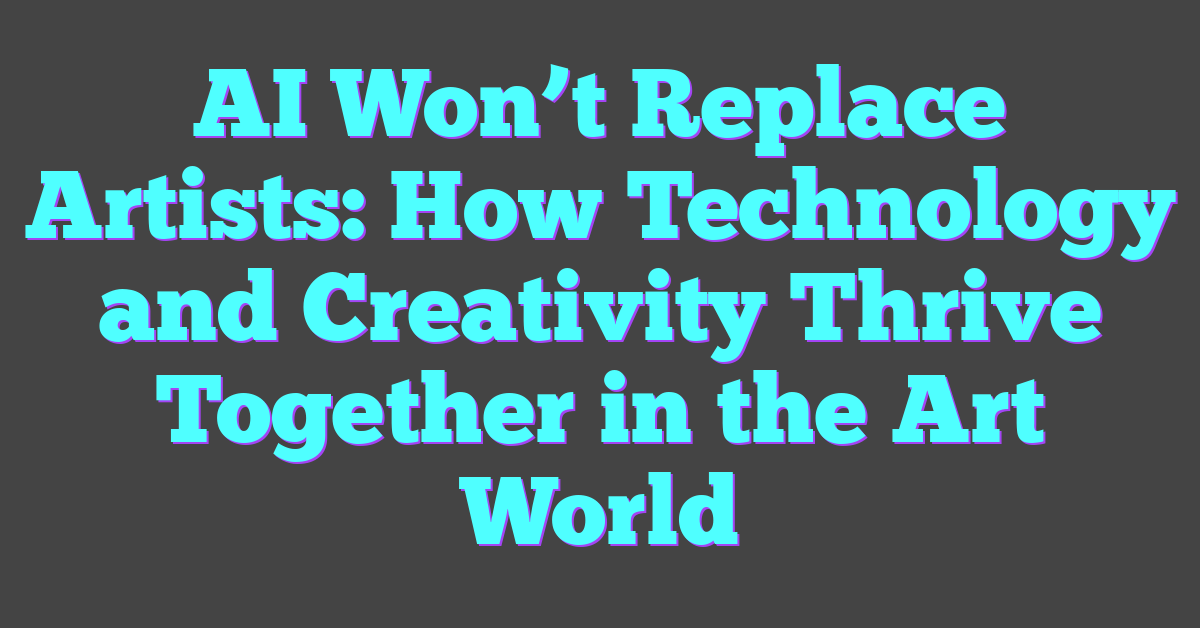Artificial intelligence isn’t just a buzzword anymore—it’s woven into the fabric of our daily lives. From virtual assistants that help manage our schedules to recommendation algorithms that know our tastes better than we do, AI has become a favorite tool for many. But what makes one AI stand out from the rest?
Everyone has their own “favorite AI,” the one they rely on the most or find the most fascinating. Whether it’s the AI that powers their smart home, the one that helps them stay connected with friends, or even the AI that makes their gaming experience more immersive, these intelligent systems have a special place in our hearts and routines. Let’s explore what makes these AI favorites and how they’re changing the way we live.
Defining “Favorite AI”
In today’s tech-driven world, artificial intelligence has embedded itself into various facets of our lives. This section dives into what AI is and what elements drive its popularity.

What Is AI?
Artificial intelligence, often abbreviated as AI, refers to the simulation of human intelligence in machines. These systems utilize algorithms and iterative learning processes to perform tasks that typically require human cognition. Examples include detecting patterns in data, recognizing speech, and making decisions. AI includes subsets like machine learning and deep learning, which help refine accuracy and efficiency through data-driven learning.
Elements of Popularity in AI
Several elements contribute to the popularity of AI systems:
- User Experience: A seamless and intuitive interface significantly enhances user satisfaction. Virtual assistants like Alexa and Siri provide clear examples, where ease of use leads to widespread adoption.
- Reliability: Consistent and accurate performance builds trust. AI systems like Google Search and recommendation engines demonstrate high reliability by delivering relevant results consistently.
- Customization: Personalization capabilities make AI more appealing. Services like Netflix and Spotify tailor content recommendations, resulting in a more engaging user experience.
- Innovative Features: Advanced functionalities distinguish leading AI systems. Self-driving cars and AI in gaming showcase cutting-edge technology that captivates users.
- Community and Support: Robust support and active user communities enhance the overall experience. Open-source platforms like TensorFlow and PyTorch benefit from strong community engagement and extensive documentation.
These elements illustrate why certain AI systems become favorites among users, revolutionizing how people interact with technology.
Historical Milestones in AI Development
Exploring the historical milestones in AI development sheds light on how these systems became favorites among users.
Key Breakthroughs
In 1956, John McCarthy coined the term “Artificial Intelligence” at the Dartmouth Conference. This marked the beginning of AI as a field. Alan Turing’s development of the Turing Test in 1950 provided a framework for evaluating a machine’s ability to exhibit intelligent behavior.
In 1980, the first successful expert systems, like MYCIN and DENDRAL, emerged. These systems demonstrated AI’s potential in specific domains by solving complex problems that typically required human expertise.
Deep learning gained traction in 2012 when neural networks, specifically AlexNet, outperformed other methods in the ImageNet Large Scale Visual Recognition Challenge. This achievement revitalized interest in AI and marked a significant leap forward.
Influences on Modern AI
Deep learning, which leverages neural networks, has since driven many advancements in modern AI. The introduction of generative adversarial networks (GANs) in 2014, developed by Ian Goodfellow, enabled the creation of realistic synthetic data, greatly influencing image and video synthesis.
Natural language processing (NLP) saw a revolution with the development of the Transformer model in 2017. Applications like Google’s BERT and OpenAI’s GPT-3 showcase impressive capabilities in understanding and generating human language, transforming the virtual assistants and chatbots people use daily.
Reinforcement learning, popularized by Google’s AlphaGo in 2016, demonstrated AI’s capability to master complex games. This method has since impacted fields such as robotics and resource management, influencing how these systems optimize tasks.
These breakthroughs and influences have cemented AI’s role in technology and daily life, reflecting why many people consider AI systems their favorites.
Popular AI Technologies in Daily Life
Artificial intelligence technologies have become integral to our everyday activities, often in ways we don’t even realize. These technologies enhance convenience, efficiency, and user experience.
Smart Assistants
Smart assistants like Alexa, Google Assistant, and Siri have revolutionized how we interact with devices. They use natural language processing (NLP) and machine learning to understand commands and perform tasks. These assistants can control smart home devices, set reminders, answer questions, and manage schedules. With continuous updates, they become more intuitive and capable, streamlining our daily routines.
AI in Smartphones
Modern smartphones are equipped with advanced AI capabilities. Features like facial recognition, voice recognition, and predictive texting rely on machine learning algorithms. Camera software uses AI to enhance photo quality, by adjusting lighting and scene recognition automatically. Virtual assistants integrated into smartphones provide personalized recommendations and automate tasks, simplifying the user experience. These AI functionalities not only improve performance but also contribute significantly to user satisfaction and device innovation.
Leading AI Innovations in Business
Leading AI innovations are transforming various sectors of business by driving efficiency and uncovering new insights. These advancements draw from machine learning models, natural language processing, and big data analytics.
AI Applications in Healthcare
AI applications in healthcare have revolutionized diagnostic accuracy and personalized treatment plans. Machine learning algorithms analyze medical records and imaging data, identifying patterns that aid in early disease detection. For instance, AI can detect anomalies in radiology scans, enabling faster diagnosis of conditions like pneumonia and breast cancer. In personalized medicine, AI predicts patient responses to treatments, tailoring therapies to individual genetic profiles. Platforms like IBM Watson Health leverage AI to provide oncologists with relevant research data, aiding in the decision-making process.
AI in the Financial Sector
AI in the financial sector enhances fraud detection and risk management. Machine learning models analyze transaction patterns, flagging unusual activities that may indicate fraud. For example, AI-driven systems can immediately detect and prevent credit card fraud by identifying deviations from typical user behavior. In investment management, AI algorithms optimize portfolios by analyzing vast amounts of data, including market trends and economic indicators. Robo-advisors like Betterment utilize AI to provide personalized investment advice, making sophisticated investment strategies accessible to a broader audience.
These instances illustrate how AI continues to be pivotal in reshaping business landscapes, leading to more informed decisions and streamlined processes.
The Future of AI
Artificial intelligence’s future promises remarkable advancements, significantly affecting various fields. Emerging AI technologies and potential societal impacts stand out as key elements shaping this future.
Emerging AI Technologies
Emerging AI technologies are transforming the landscape. Autonomous vehicles are becoming more sophisticated, integrating advanced sensors and decision-making algorithms for safer navigation. Companies like Tesla and Waymo lead in developing self-driving cars, showcasing significant progress.
In healthcare, AI-powered diagnostics are revolutionizing medical imaging. Tools like IBM Watson and Google’s DeepMind demonstrate superior accuracy in detecting diseases. These advancements not only enhance diagnostic precision but also provide personalized treatment options.
AI is also making strides in natural language processing (NLP). Language models like OpenAI’s GPT-3 and Google’s BERT improve human-computer interactions, making chatbots and virtual assistants more intuitive. Such innovations are crucial in customer service and support.
Potential Impacts on Society
AI’s societal impacts are profound and multifaceted. In the job market, AI automates repetitive tasks, increasing efficiency but also displacing certain jobs. However, it creates new opportunities in AI development, maintenance, and oversight, demanding a shift in skill sets.
AI also plays a key role in addressing environmental challenges. Machine learning models predict environmental changes, assisting in disaster management and conservation efforts. AI-driven solutions help monitor deforestation, track animal populations, and manage natural resources more effectively.
Ethical considerations are paramount in AI’s evolution. Ensuring fairness and reducing biases in AI systems are critical goals. Researchers and policymakers collaborate to create guidelines and regulations, aiming for responsible AI deployment that benefits society inclusively.
Conclusion
AI is transforming every facet of our lives from the way we interact with our homes to how businesses operate. It’s making strides in healthcare and finance while paving the way for future innovations like autonomous vehicles and advanced diagnostics. As we embrace these advancements it’s crucial to consider the ethical implications and work towards fair and unbiased AI systems. The potential for AI to improve our world is immense and it’s exciting to see where this journey will take us.
Frequently Asked Questions
What is artificial intelligence (AI)?
Artificial intelligence (AI) is a branch of computer science that aims to create machines capable of performing tasks that normally require human intelligence, such as learning, reasoning, and problem-solving.
How is AI used in smart homes?
AI is used in smart homes to automate and optimize tasks like lighting, heating, security, and entertainment systems, often through voice-controlled assistants like Amazon Alexa or Google Home.
What are some historical milestones in AI?
Historical milestones in AI include the development of early neural networks in the 1950s, the creation of expert systems in the 1970s, and the advent of deep learning and AI breakthroughs in data processing and machine learning in recent years.
How does AI impact business operations?
AI impacts business operations through machine learning, natural language processing, and big data analytics, enabling more efficient decision-making, predictive analytics, and improved customer service.
What are the benefits of AI in healthcare?
AI in healthcare can improve diagnostic accuracy and create personalized treatment plans, making patient care more efficient and effective.
How is AI used in the financial sector?
In the financial sector, AI is used for fraud detection, investment optimization, and risk assessment, helping organizations make smarter financial decisions and protect against fraud.
What emerging AI technologies are shaping the future?
Emerging AI technologies shaping the future include autonomous vehicles, AI-powered diagnostic tools in healthcare, and advancements in natural language processing.
How might AI impact the job market?
AI could lead to increased automation, potentially reducing the need for certain jobs while creating new opportunities in tech and AI-related fields.
What are some environmental applications of AI?
AI can assist in disaster management, conservation efforts, and optimizing resource use, helping to address environmental challenges more effectively.
What ethical considerations are important in AI?
Ethical considerations in AI include ensuring fairness, reducing bias, and establishing guidelines for responsible use to avoid potential negative societal impacts.




